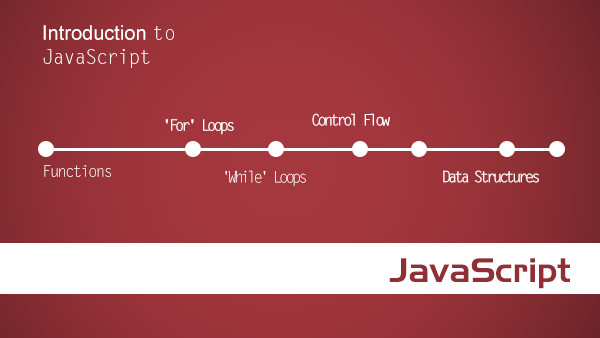1 概述
1.1 前言
JavaScript数组方法速查手册极简版中共收了32个数组的常用方法和属性,并根据方法的用途进行重新排序和分类,在文中简要的介绍了方法作用和用例说明。收藏备用吧!
文中介绍的过于简单,想更更多理解相关内容还是要多多动手实践!
2 数组属性
2.1 length-长度属性
每个数组都有一个length属性。针对稠密数组,length属性值代表数组中元素的个数。当数组是稀疏数组时,length属性值大于元素的个数。
var array1 = [ 'a', 'b', 'c' ];
console.log(array1.length); // 输出 3
array1.length = 2;
console.log(array1); // 输出 [ "a", "b" ]
3 数组方法
3.1 Array.isArray-类型判定
Array.isArray() 数组类型判定。
console.log(Array.isArray([1, 2, 3])); // 输出 true
console.log(Array.isArray({num: 123})); //输出 false
3.2 Array.of-创建数组
Array.of() 从可变数量的参数创建数组,不管参数的数量或类型如何。
console.log(Array.of(3)); // 输出 [3]
console.log(Array.of(1,2,3)); // 输出 [1,2,3]
3.3 Array.from-创建数组
Array.from() 用类数组或可迭代对象创建新数组。
console.log(Array.from('abcd')); // 输出 [ "a", "b", "c", "d" ]
console.log(Array.from([1, 2, 3], x => x + 1)); // 输出 [ 2, 3, 4 ]
4 数组原型方法
4.1 查找元素
4.1.1 find-按函数查找
Array.prototype.find() 找到第一个满足检测函数条件的元素,并返回该元素,没找到则返回 undefined。
var array1 = [1, 2, 3, 4, 5];
console.log(array1.find(x => x > 3)); // 输出 4
4.1.2 findIndex-按函数查找
Array.prototype.findIndex() 找到第一个满足检测函数条件的元素,并返回该元素索引。找不到返回-1。
var array1 = [6, 7, 8, 9, 10];
console.log(array1.findIndex(x => x > 8)); // 输出 3
4.1.3 indexOf-按元素值查找
Array.prototype.indexOf() 查找元素并返回元素索引值,找不到返回-1。
var arr= [1, 2, 3, 4];
console.log(arr.indexOf(3)); // 输出 2
console.log(arr.indexOf(6)); // 输出 -1
console.log(arr.indexOf(2, 2)); // 输出 -1
第二个参数表示查找的起始位置。
4.1.4 lastIndexOf-按元素值查找
Array.prototype.lastIndexOf() 从后向前查找元素并返回元素索引值,找不到返回 -1。
var arr = ['a', 'b', 'c', 'd'];
console.log(arr.lastIndexOf('b')); // 输出 1
console.log(arr.lastIndexOf('e')); // 输出 -1
4.2 添加元素
4.2.1 push-尾部添加
Array.prototype.push() 在尾部添加一个或多个元素,返回数组的新长度。
var array1= ['a', 'b', 'c'];
console.log(array1.push('d')); // 输出 4
console.log(array1); // 输出 [ "a", "b", "c", "d" ]
4.2.2 unshift-头部添加
Array.prototype.unshift() 在头部添加一个或多个元素,并返回数组的新长度。
var array1 = [ 4, 5, 6 ];
console.log(array1.unshift(3)); // 输出 4
console.log(array1); // 输出 [ 3, 4, 5, 6 ]
console.log(array1.unshift(1, 2)); // 输出 6
console.log(array1); // 输出 [ 1, 2, 3, 4, 5, 6 ]
4.3 删除元素
4.3.1 pop-尾部删除
Array.prototype.pop() 从尾部删除一个元素,并返回该元素。
var array1= ['a', 'b', 'c', 'd'];
console.log(array1.pop()); // 输出 d
console.log(array1); // 输出 [ "a", "b", "c" ]
4.3.2 shift-头部删除
Array.prototype.shift() 从头部删除一个元素,并返回该元素。
var array1 = [1, 2, 3];
console.log(array1.shift()); // 输出 1
console.log(array1); // 输出 [ 2, 3 ]
4.4 替换元素
4.4.1 splice-添加替换删除
Array.prototype.splice() 添加、替换、删除元素。会改变原数组。
var array1 = [ 'a', 'c', 'd' ];
array1.splice( 1, 0, 'b');
console.log(array1); // 输出 [ "a", "b", "c", "d" ]
array1.splice(1,1);
console.log(array1); // 输出 [ "a", "c", "d" ]
array1.splice(1,1,'bb','cc');
console.log(array1); // 输出 [ "a", "bb", "cc", "d" ]
array.splice(start[, deleteCount[, item1[, item2[, ...]]]])
- 参数
start:表示替换的位置 - 参数
deleteCount:表示删除元素的数量 - 参数
item1...: 表示添加的元素
4.5 顺序相关
4.5.1 sort-排序
Array.prototype.sort() 数组排序,改变原数组。
var array1 = [ 4, 3, 10, 2 ];
console.log(array1.sort()); // 输出 [ 10, 2, 3, 4 ]
console.log(array1.sort((x1, x2) => x1 > x2)); // 输出 [ 2, 3, 4, 10 ]
4.5.2 reverse-反序
Array.prototype.reverse() 倒置数组,并返回新数组。会改变原数组。
var sourceArray= [ 'a', 'b', 'c' ];
var reverseArray = sourceArray.reverse();
console.log(reverseArray); // 输出 [ "c", "b", "a" ]
console.log(sourceArray == reverseArray); // 输出 true
4.6 遍历迭代
4.6.1 keys-键迭代器
Array.prototype.keys() 数组的键迭代器。
var array1 = ['a', 'b', 'c'];
for (let key of array1.keys()) {
console.log(key); // 输出 0, 1, 2
}
4.6.2 values-值迭代器
Array.prototype.values() 数组的值迭代器。
const array1 = ['a', 'b', 'c'];
const iterator = array1.values();
for (const value of iterator) {
console.log(value); // 输出 a b c
}
4.6.3 entries-键/值对迭代器
Array.prototype.entries() 数组的键/值对迭代器。
var array1 = ['a', 'b', 'c'];
var iterator1 = array1.entries();
console.log(iterator1.next().value); // 输出 Array [0, "a"]
console.log(iterator1.next().value); // 输出 Array [ 1, "b" ]
4.6.4 forEach-遍历
Array.prototype.forEach() 遍历数组中的元素,并执行回调函数。
var arr = [1, 2, 3, 4];
arr.forEach(function (x) {
console.log(x + 1); // 输出 2 3 4 5
});
4.7 检测
4.7.1 includes-值包含检测
Array.prototype.includes() 值包含检测,如包含返回 true,不包含返回false。
var array1 = [1, 2, 3];
console.log(array1.includes(2)); // 输出 true
console.log(array1.includes(4)); // 输出 false
4.7.2 some-函数包含检测
Array.prototype.some() 检测数组中是否有元素可以通过检测函数验证。
var array1 = [ 1, 2, 3, 4 ];
console.log(array1.some(x => x >3)); // 输出 true
console.log(array1.some(x => x > 5)); // 输出 false
4.7.3 every-函数完全检测
Array.prototype.every() 检测数组中是否所有元素都可以通过检测函数验证。
var array1 = [ 1, 2, 3, 4, 5 ];
console.log(array1.every(x => x < 8)); //输出 true
console.log(array1.every(x => x < 4)); //输出 false
4.8 合并
4.8.1 join-合并成字符串
Array.prototype.join() 合并数组中所有元素成为字符串并返回。
var array1= [ 'a', 'b', 'c' ];
console.log(array1.join()); // 输出 a,b,c
console.log(array1.join("-")); // 输出 a-b-c
4.8.2 concat-合并成数组
Array.prototype.concat() 合并两个或多个数组,返回一个全新数组,原数组不变。
var array1 = [ 'a', 'b' ];
var array2 = [ 'c', 'd' ];
console.log(array1.concat(array2)); // 输出 [ "a", "b", "c", "d" ]
该方法可以有多个参数。
4.9 累计
4.9.1 reduce-左侧累计
Array.prototype.reduce() 从左至右按 reducer 函数组合元素值,并返回累计器终值。
const array1 = [1, 2, 3, 4];
const reducer = (accumulator, currentValue) => accumulator + currentValue;
// 1 + 2 + 3 + 4
console.log(array1.reduce(reducer)); // 输出 10
// 5 + 1 + 2 + 3 + 4
console.log(array1.reduce(reducer, 5)); // 输出 15,其中5是累计器初始值。
4.9.2 reduceRight-右侧累计
Array.prototype.reduceRight() 从右至左按 reducer 函数组合元素值,并返回累计器终值。
const array1 = [1, 2, 3, 4];
const reducer = (accumulator, currentValue) => accumulator.concat(currentValue);
console.log(array1.reduceRight(reducer)); // 输出 [ 4, 3, 2, 1 ]
console.log(array1.reduceRight(reducer, 5)); // 输出 [ 5, 4, 3, 2, 1 ]
4.10 copyWithin-内部复制
Array.prototype.copyWithin() 数组内部复制,不改变原数组长度。
var array1 = ['a', 'b', 'c', 'd', 'e','f'];
console.log(array1.copyWithin(0, 3, 5)); // 输出 [ "d", "e", "c", "d", "e", "f" ]
console.log(array1.copyWithin(1, 3)); // 输出 [ "d", "d", "e", "f", "e", "f" ]
arr.copyWithin(target[, start[, end]])
- 参数
target: 表示要复制到的索引位置,如为负值则从后向前计数。 - 参数
start: 表示要复制序列的起始索引位置,如为负值则从后向前计数。如省略该值,则从索引0开始。 - 参数
end: 表示要复制序列的结束位置,如为负值则从后向前计数。如省略该值,则复制到结尾位置。
4.11 fill-填充函数
Array.prototype.fill() 用固定值填充起始索引到终止索引区间内的全部元素值,不包括终止索引。
var array1 = [1, 2, 3, 4];
console.log(array1.fill(9, 2, 4)); // 输出 [ 1, 2, 9, 9 ]
console.log(array1.fill(8, 1)); // 输出 [ 1, 8, 8, 8 ]
console.log(array1.fill(7)); // 输出 [ 7, 7, 7, 7 ]
4.12 filter-过滤函数
Array.prototype.filter() 生成由通过检测函数验证元素组成的新数组并返回。
var arr = [ 9 , 8 , 7 , 6];
console.log(arr.filter(x => x >7)); //输出 [ 9, 8 ]
4.13 flat-数组扁平化
Array.prototype.flat() 按指定深度递归遍历数组,并返回包含所有遍历到的元素组成的新数组。不改变原数组。
var arr1 = [ 1, 2, [ 3, 4 ] ];
console.log(arr1.flat()); // 输出 [ 1, 2, 3, 4 ]
var arr2 = [ 1, 2, [3, 4, [ 5, 6 ] ] ];
console.log(arr2.flat()); // 输出 [ 1, 2, 3, 4, [ 5, 6 ] ]
var arr3 = [1, 2, [ 3, 4, [ 5, 6 ] ] ];
console.log(arr3.flat(2)); // 输出 [ 1, 2, 3, 4, 5, 6 ]
4.14 map-映射
Array.prototype.map() 创建一个新数组,该数组中的元素由原数组元素调用map函数产生。
var array1 = [1, 2, 3, 4];
console.log(array1.map(x => x * 2)); // 输出 [ 2, 4, 6, 8 ]
4.15 slice-截取数组
Array.prototype.slice() 按参数begin 和 end 截取数组,不改变原数组。
var array1 = [ 1, 2, 3, 4, 5];
console.log(array1.slice( 2, 4 )); //输出 [ 3, 4 ]
console.log(array1); //输出 [ 1, 2, 3, 4, 5 ]
5 结尾
5.1 结语
文中介绍的过于简单,想更多理解相关内容还是要多多动手实践!
因时间不足,能力有限等原因,存在文字阐述不准及代码测试不足等诸多问题。如发现错误请不吝指正!谢谢。











 随时随地看视频
随时随地看视频





热门评论
-

Imp丶yu2019-05-06 2
-

Imp丶yu2019-05-06 2
-

竹自青2019-05-06 0
查看全部评论怎么收藏
如何收藏?
。
怎么收藏
如何收藏?
。
虽然很多文档都有,但抄阅一下也不错(*๓´╰╯`๓)♡